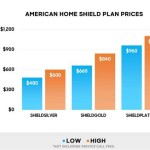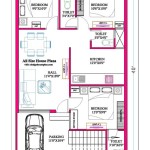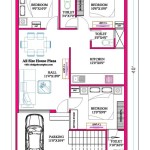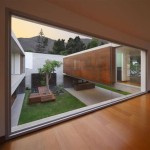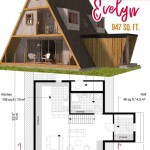Home Floor Plans With Wrap Around Porch: A Comprehensive Overview
Home floor plans incorporating a wrap-around porch represent a significant architectural choice, influencing both the aesthetic appeal and the functional living space of a residence. This design element extends the living area outwards, providing a transitional zone between the interior and the surrounding landscape. Wrap-around porches are characterized by their continuous extension along at least two sides of the house, often encompassing the entire perimeter, offering diverse perspectives and creating a distinctive visual statement.
The appeal of a home with a wrap-around porch goes beyond mere aesthetics. It provides a practical solution for outdoor living, offering a sheltered space for relaxation, entertainment, and connection with nature. These porches create a shaded area, mitigating direct sunlight and reducing the need for extensive air conditioning during warmer months. They can also serve as a buffer against inclement weather, allowing residents to enjoy the outdoors even during light rain or snowfall. Furthermore, a wrap-around porch can significantly increase the property's resale value, appealing to potential buyers who appreciate the charm and functionality associated with this architectural feature.
Key Considerations When Choosing a Home Floor Plan with a Wrap-Around Porch
Selecting a home floor plan with a wrap-around porch requires careful consideration of several key factors. These factors directly impact the usability, cost, and overall satisfaction with the final built structure. Failing to adequately address these considerations can lead to design flaws, increased construction expenses, and a less-than-optimal living experience.
First, the orientation of the house on the property is paramount. The porch should be positioned to maximize exposure to desirable views and natural light while minimizing exposure to harsh weather conditions, such as strong winds or intense afternoon sun. This requires a thorough understanding of the local climate, including prevailing wind patterns, sun angles, and seasonal weather variations. A south-facing porch, for instance, may offer optimal sunlight during cooler months but could become excessively hot during the summer. Similarly, a porch facing prevailing winds might require additional windbreaks for comfortable usage.
Second, the size and layout of the porch must be carefully planned to accommodate its intended uses. A narrow porch may only allow for minimal seating, while a wider porch can accommodate dining tables, lounge areas, and even outdoor kitchens. The layout should also consider accessibility, ensuring that the porch is easily accessible from both the interior of the house and the surrounding yard. Consider the flow of traffic and the potential for overcrowding, especially during social gatherings. The placement of doors leading to the porch should also be strategized to optimize natural light and ventilation within the house.
Third, the materials used for the construction of the porch should be durable, weather-resistant, and aesthetically consistent with the overall design of the house. Common materials include wood, composite decking, concrete, and stone. Wood offers a classic and natural look but requires regular maintenance to prevent rot and insect infestation. Composite decking is a low-maintenance alternative that mimics the appearance of wood while offering superior durability and resistance to the elements. Concrete and stone provide a more durable and low-maintenance option, but they may not complement all architectural styles. The choice of materials should also consider the local climate and the potential for exposure to extreme temperatures, moisture, and UV radiation. The roofing material should also be considered and should complement the rest of the house.
Architectural Styles That Complement Wrap-Around Porches
Wrap-around porches are frequently associated with particular architectural styles, enhancing the overall aesthetic coherence of the home. Certain styles inherently lend themselves to the inclusion of a wrap-around porch, while others may require more creative adaptation to integrate this feature effectively. Understanding these stylistic relationships is crucial for achieving a harmonious and visually appealing design.
The most common architectural style associated with wrap-around porches is the Victorian. Victorian homes, characterized by their ornate details, steep roofs, and asymmetrical facades, often incorporate wrap-around porches as a defining feature. The porch columns are typically adorned with intricate carvings and decorative brackets, enhancing the overall grandeur of the house. The porch often serves as a focal point, providing a welcoming entry and a space for displaying elaborate landscaping. The connection between the porch and the house becomes seamless, further reinforcing the overall visual appeal.
Another architectural style that frequently incorporates wrap-around porches is the farmhouse style. Farmhouse homes, characterized by their simple lines, functional design, and emphasis on natural materials, often utilize wrap-around porches as a practical extension of the living space. The porch provides a shaded area for relaxation and entertainment, as well as a convenient space for storing outdoor equipment and supplies. The porch columns are typically simple and unadorned, reflecting the utilitarian nature of the farmhouse style. The porch becomes an integral part of the house, blurring the boundaries between the interior and the exterior.
The Craftsman style also lends itself well to the inclusion of wrap-around porches. Craftsman homes, characterized by their low-pitched roofs, wide eaves, and exposed rafter tails, often incorporate wrap-around porches as a means of connecting the house with the surrounding landscape. The porch columns are typically thick and tapered, reflecting the solid and grounded nature of the Craftsman style. The porch often features built-in seating and other architectural details, enhancing its functionality and aesthetic appeal. The porch becomes an extension of the living room, providing a comfortable space for relaxation and socializing.
While less common, wrap-around porches can also be successfully integrated into other architectural styles, such as the Colonial Revival and the Ranch styles. In these cases, careful attention must be paid to the proportions, materials, and detailing of the porch to ensure that it complements the overall design of the house. The porch should not appear as an afterthought but rather as an integral part of the architectural composition. The design choices should ensure that the porch integrates the historical elements of each style as well.
Practical Benefits of a Wrap-Around Porch: Beyond Aesthetics
The advantages of a wrap-around porch extend far beyond its visual appeal, offering a range of practical benefits that enhance the livability and functionality of a home. These benefits can be categorized into several key areas, including climate control, expanded living space, and increased property value.
One significant benefit is improved climate control. The porch acts as a natural buffer, shielding the interior of the house from direct sunlight and reducing the need for air conditioning during warmer months. This can lead to significant energy savings and a more comfortable indoor environment. In addition, the porch provides a shaded area for outdoor activities, allowing residents to enjoy the outdoors even during hot weather. The overhang of the porch roof can also protect the walls of the house from rain and snow, reducing the risk of water damage and extending the lifespan of the exterior cladding.
The wrap-around porch effectively extends the living space of the home, providing an additional area for relaxation, entertainment, and dining. This is particularly valuable in smaller homes, where indoor space may be limited. The porch can be furnished with comfortable seating, tables, and other amenities, creating an outdoor living room that can be enjoyed year-round. The increased square footage of usable space significantly enhances the home's value.
Furthermore, a wrap-around porch can significantly increase the property's resale value. Homes with wrap-around porches are often perceived as being more desirable and charming, attracting a wider range of potential buyers. The porch adds to the curb appeal of the house, creating a positive first impression and enhancing its overall marketability. This architectural element can make a home stand out from the competition, increasing its perceived value and likelihood of a successful sale. The addition of a porch is often seen as a sign of quality and craftsmanship, indicating that the home has been well-maintained and cared for.
Finally, a wrap-around porch promotes a sense of community and connection with the surrounding neighborhood. The porch provides a welcoming space for socializing with neighbors and passersby, fostering a sense of community and enhancing the overall quality of life. Residents can sit on the porch and watch the world go by, engaging in casual conversations and building relationships. The porch becomes a gathering place, promoting social interaction and strengthening community bonds. This is particularly valuable in neighborhoods where there is a strong sense of community and a desire to connect with others.
In conclusion, a carefully designed home floor plan with a wrap-around porch offers a multitude of benefits, ranging from aesthetic enhancements to practical improvements in living space and overall comfort. The design of the space should consider the orientation of the house, material choices, and architectural style. The integration of a well-planned wrap-around porch provides a unique blend of indoor and outdoor living, enhancing the overall appeal and value of the home.

Wrap Around Porch House Plans For A 4 Bedroom Country Home

Modern Farmhouse Plan With Wraparound Porch 3474 Sq Ft 70608mk Architectural Designs House Plans

3 Bedroom Open Floor Plan With Wraparound Porch And Basement

Tyra House Plan Two Story Wraparound Porch Home Design M 3713 Ro

Plan 62207 Country Style House With Wrap Around Porch

House Plans With Wraparound Porches Porch Houseplans Com
One Story Wrap Around Porch House Plans Floor Plan Designs Houseplans Com

Wonderful Wrap Around Porch 3027d Architectural Designs House Plans

Plan 51920 Two Story Country Home Plans With Wrap Around Porch
House Floor Plans With Wrap Around Porches

